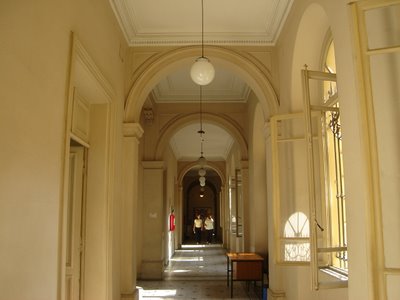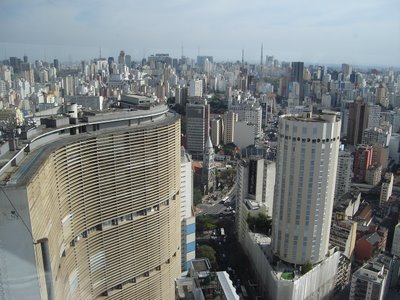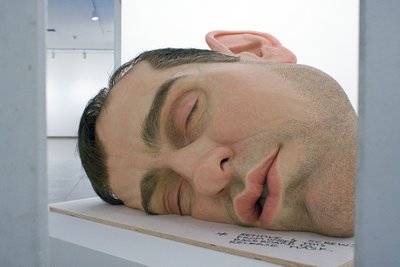I think that my post about Street Art enjoyed many visitors. There are much more amazing and creative artists I saw on Wooster Collective, but just today I would like to share with all of you, four artists, three of them suggested by friends. Nancy Bea which has a web site of her paintings and also has a blog , named GenreCookShop, mention on her commentary, the sculptor Duane Hanson. Naomi, from Here In The Hills, made a mention to the sculptor George Segal. Pam in Tucson, from Tortoise Trail, mention the realistic sculptures by J. Seward Johnson . I also have constantly seen in the Internet the sculptures of the artist Ron Mueck. His sculptures are so amazing and so provoking that I thought you all might enjoy looking at his work as much as I do. (Click on photos to see the details). Last but not least, Fran aka Redondowriter, from Sacred Ordinary, mention the big project called Art in Public Places, in Downtown Los Angeles. But the last suggestion would be for a next time! Thank you all very much!
.
"In Bed", 2005 (Ron Mueck)
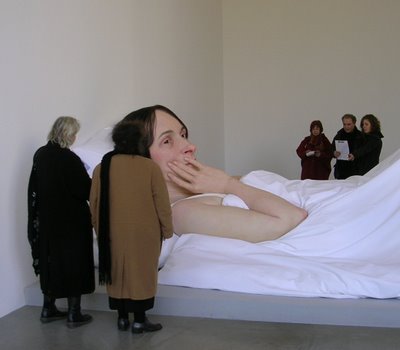
"Mask II" (Ron Mueck)

"Wild Men" (Ron Mueck)

"Two Women", 2005 (Ron Mueck)
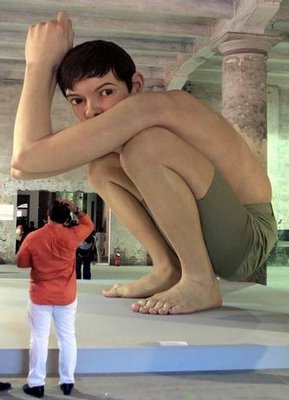 "Boy", Bienal de Veneza 2001 (Ron Mueck)
"Boy", Bienal de Veneza 2001 (Ron Mueck)
"Ron Mueck, (1958- ) is a London-based photo-realist artist. Born in Melbourne, Australia, to parents who were toy makers. He started out as a puppet maker for Australian children's TV, and settled in London (via the United States) working for Jim Henson on Sesame Street and The Muppets and supervising the special effects for two feature films: Dreamchild (1985) and Labyrinth (1986) a fantasy epic starring David Bowie. Mueck then started his own company in London, making models to be photographed for advertisements. In the early 1990s, still in his advertising days, Mueck was commissioned to make something highly realistic, and was wondering what material would do the trick. Fiberglass resin was the answer, and Mueck has made it his bronze and marble ever since." "Ron Mueck’s work became world-famous when a poignant sculpture of his dead father’s small, naked body caused shockwaves in the Royal Academy’s Sensation exhibition in 1997. The attention to detail and sheer technical brilliance of his figures are incredible, but it is Mueck’s use of scale that takes your breath away. He still lives and works in London."
.
.
 "Traveller" (Duane Hanson)
"Traveller" (Duane Hanson) 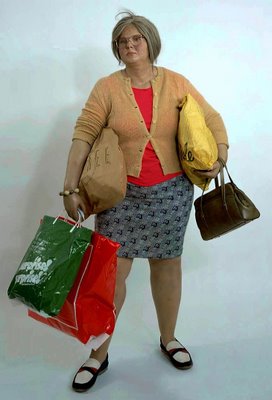 "Young Shopper" (Duane Hanson)
"Young Shopper" (Duane Hanson) "Queenie II" (Duane Hanson)
"Queenie II" (Duane Hanson)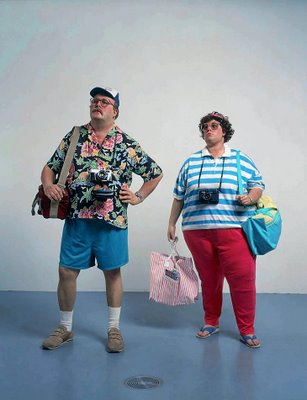 "Tourist II" (Duane Hanson)
"Tourist II" (Duane Hanson)
"Duane Hanson (January 17, 1925 - January 6, 1996) was an American post-modern sculptor known for his life-sized photorealistic works of humans, cast in various materials, including polyester resin, fiberglass, even Bondo®. Later works, starting in the mid-1980s, were cast in bronze. Most of his sculptures are direct three-dimensional casts of his models, a technique known as life casting. The surface of the cast is carefully painted in skin tones; he adds clothing, jewelry, and other props, lending to a trompe l'oeil or almost hyper-realistic effect. Duane Hanson’s sculptures of people are just too believable."
.
 "Abraham and Isaac" (George Segal)
"Abraham and Isaac" (George Segal)
"The Holocaust" (George Segal)
 "The Dancers" (George Segal)
"The Dancers" (George Segal) "Gay Liberation" (George Segal)
"Gay Liberation" (George Segal)"George Segal (November 26, 1924 - June 9, 2000) was an American painter and sculptor associated with the Pop Art movement. Although Segal started his art career as a painter, his best known works are cast life size figures and the tableaux the figures inhabited. In place of traditional casting techniques, Segal pioneered the use of plaster bandages (plaster-impregnated gauze strips designed for making orthopedic casts) as a sculptural medium. Initially, Segal kept the sculptures stark white, but a few years later he began painting them (usually in bright monochrome). Eventually he started having the final forms cast in bronze, sometimes patinated white to resemble the original plaster. Segal's figures had minimal color and detail, which gave them a ghostly, melancholic appearance. In larger works, one or more figures were placed in anonymous, typically urban environments such as a street corner, bus, or diner. In contrast to the figures, the environments were built using found objects."
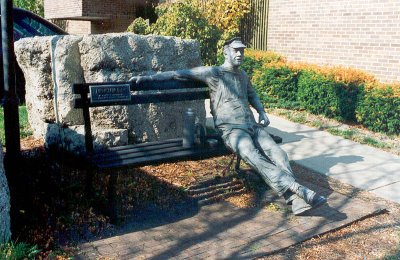 "Lunch Break" (J. Seward Johnson)
"Lunch Break" (J. Seward Johnson) "Making a Point" (J. Seward Johnson)
"Making a Point" (J. Seward Johnson)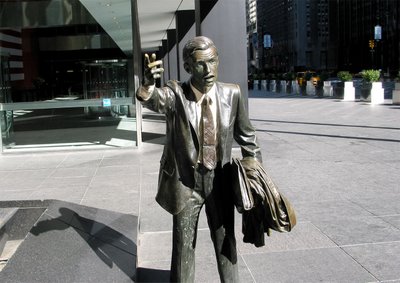 "Taxi" (J. Seward Johnson)
"Taxi" (J. Seward Johnson)

"Painter with Dog" (J. Seward Johnson)
John Seward Johnson II (born 1930), "also known as J. Seward Johnson, Jr. and Seward Johnson is an American sculptor known for his trompe l'oeil bronze painted sculptures. While early in his life, his artistic life focused on painting, he turned his talents to sculpture in 1968. Johnson is most well known for his life-size cast bronze statues of people of all ages engaged in day-to-day activities such as a father teaching his child to ride a bike, a woman sunbathing, and two people on a park bench. "
Click on photos to enlarge






 Click to enlarge this beautiful panoramic view by http://www.skyscrapercity.com/showthread.php?t=352003
Click to enlarge this beautiful panoramic view by http://www.skyscrapercity.com/showthread.php?t=352003














